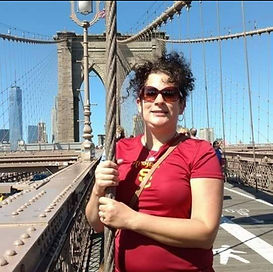GUEST COLUMN.
TIME TO MEET THE TRILLION-DOLLAR CHALLENGE
By Noah Winn-Ritzenberg, Senior Director, Public Finance, Volcker Alliance

America’s infrastructure, upon which local communities and national economic vitality depend, is at serious risk. Routine repairs, often delayed in favor of competing priorities, have accumulated into an estimated $1 trillion backlog of deferred maintenance costs. This off-book liability threatens state and local fiscal health, public safety, and the delivery of essential services. Ignoring this backlog will mean higher long-term costs to replace infrastructure, lost productivity from economic disruptions, and greater vulnerability to natural disasters, which continue to increase in severity and frequency.
The Volcker Alliance and the Hubert H. Humphrey School of Public Affairs at the University of Minnesota, with support from the Pew Charitable Trusts, have partnered to help states quantify infrastructure maintenance liabilities and improve practices to close these funding gaps. The recently released report series, Meeting the Trillion-Dollar Challenge, includes an in-depth look at varying approaches taken by ten states, a review of disclosure practices across all fifty states, and a tool kit that provides practical guidance for state officials working to institute or improve systems for identifying, managing, and funding deferred maintenance.
A comprehensive review of state capital budgets and centralized capital improvement plans found that 20 states lack any formal consideration of deferred maintenance in their capital budgets, and little consistency exists among states’ assessment and disclosure practices. Where disclosure does exist, it is often scattered. Without a consistent, full, and transparent accounting of accumulated deferred maintenance, policymakers and the public cannot gauge the true scale of the issue, a critical first step to addressing the growing backlog, which is now equivalent to about 4 percent of US GDP.
Increasingly common extreme weather events exacerbate the problem. The Congressional Budget Office estimates that average annual damage from flooding alone amounted to $46 billion over the past decade, a number it expects to increase upwards of 25 percent by 2050. Resilient infrastructure has never been more important and will require sizable investment from states and localities to safeguard economic productivity and essential service delivery.
Making matters worse, states and localities, already responsible for nearly 80 percent of infrastructure investment in the US, now find themselves with even less federal support. As reductions in disaster relief, transit funding, block grants, and other programs shift more financial responsibility to states and localities, strained budgets may further squeeze infrastructure investment and maintenance.
Local governments may be particularly vulnerable. Unlike states, which can generally choose to cut services, raise taxes, or push costs down to local governments, cities and counties are often subject to federal and state mandates to administer services as well as state-imposed revenue restrictions, such as tax caps and limits on the types of taxes they can levy.
Deferring infrastructure maintenance may be a tempting relief valve as budgets become strained. Ignoring the mounting maintenance backlog, however, could imperil economic activity and future revenue as well as incur higher replacement costs down the road, only serving to deepen fiscal woes.
Some states are proactively taking steps to quantify their deferred maintenance and begin to address the backlog. Hawaii, Alaska, Idaho, Massachusetts, and Montana provide explicit guidance for assessment and reporting of deferred maintenance. While not statutorily required, California and Illinois report on deferred maintenance needs in their five-year capital improvement plan and annual capital budget, respectively. The progress made by these and other states demonstrates that systematic assessment and transparent reporting are achievable, albeit initial, steps to addressing this critical issue.
The Volcker Alliance’s tool kit offers recommendations for a range of practical actions that states can take to address deferred maintenance backlogs:
· Standardize definitions and assessment scope to reduce ambiguity.
· Assign roles and responsibilities among state agencies.
· Create statewide inventory and condition assessment procedures and systems to identify needs.
· Adopt a prioritization framework using data-driven metrics like a Facility Condition Index and/or qualitative factors like urgency and mission alignment.
· Establish consistent funding streams, such as dedicated capital funds or revolving funds.
· Educate agency, legislative, and executive staff on assessment and reporting procedures and the long-term costs of deferred maintenance.
· Consolidate reporting of deferred maintenance needs and appropriations in one place.
States at the beginning of their efforts can use the tool kit as a road map for establishing foundational systems. Those with existing frameworks can identify opportunities to refine and enhance them. Each component offers key actions and real examples drawn from the experiences of states analyzed in this project.
Inadequate infrastructure maintenance poses a serious threat to the long-term fiscal health of states. It’s time to take proactive steps before preventable crises ensue.
The contents of this Guest Column are those of the author, and not necessarily Barrett and Greene, Inc.
#StateandLocalInfrastructureManagement #StateInfrastructureMaintenance #StateandLocalInfrastructurePerformance #StateDeferredInfrastructureMainteance #StateInfrastructureMaintenanceToolKit #StateInfrastructureMantenanceToolkit #VolckerAllliance #VolckerAllianceToolKitInfrastructureMainteance #StateInfrastructureMaintenanceTransparency #StateTrillionDollarInfrastructureChallenge #OneTrillionDeferredMaintenanceBacklog #StateandLocalMaintenananceFunding #StateInfrastructureMaintnenaceFunding #StateandLocalTaxCaps #PublicSectorMaintenanceFundingShortage #StatePrioritizationInfrastructureMaintenance #StateInfrastructureInventory #StateConditionAssessmentProcedures #StateModelsInfrastrcutureMaintenance #HawaiiInfrastructureMaintenance #DeferredMaintenanceReporting #DeferredMaintenanceTransparency #CaliforniaDeferredMaintenaceReporting #IllinoisDeferredMaintenanceReporting #MeetingTrillionDollarChallengeReport #AlaskaInfrastructureMaintenance #MontanaInfrastructureMaintenance #MassachusettsInfrastrctureMaintenance #CentralInformationOfMaintenaceNeedsAndAppropritations #ConsolidatedReportingDeferredMaintenance #StateandLocalInfrastructureMaintenanceEducation #NoahWinnRitzenberg #BandGGuestColumn #BarrettandGreeneInc



































































































